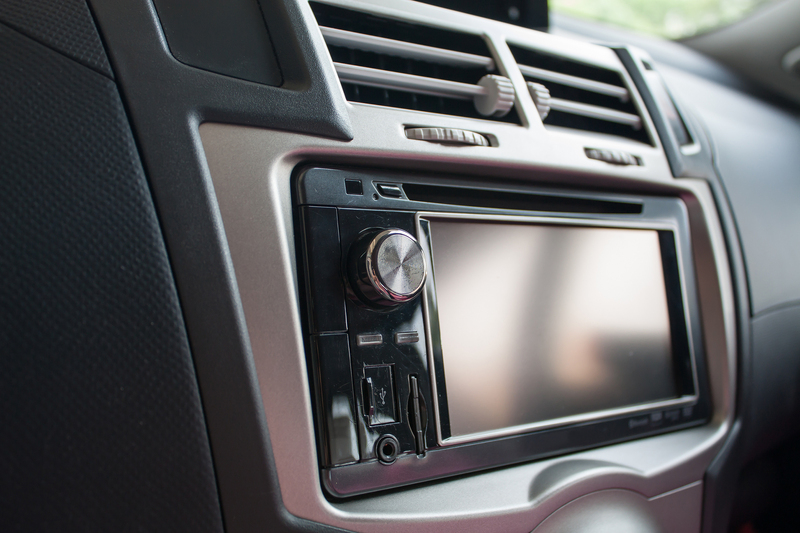Expert Sofa Storage Hacks for Longevity and Preservation
Posted on 05/06/2025
Expert Sofa Storage Hacks for Longevity and Preservation
Have you ever wondered how to keep your sofa looking new, even after months or years in storage? Maintaining furniture, especially sofas, can be challenging without the proper care and knowledge. Whether you need temporary storage during a move or plan on preserving a cherished couch for the long term, applying expert sofa storage hacks can make a significant difference in its longevity and appearance.
This detailed guide offers insightful, expert-approved strategies to help you store your sofa for maximum longevity, ensuring that it remains comfortable, clean, and attractive for years to come.

Why Is Proper Sofa Storage Important?
Before diving into the techniques, it's crucial to understand the importance of proper sofa storage. Sofas are not just expensive investments; they often hold sentimental value. Improper storage can cause:
- Mold and mildew growth
- Fabric discoloration and fading
- Structural damage
- Pest infestations
- Unpleasant odors
If you care for your furniture, employing the right sofa storage ideas and solutions will vastly extend its lifespan and preserve its original beauty and function.
Preparing Your Sofa for Storage
1. Cleaning Your Sofa Thoroughly
The first step is a comprehensive cleaning. Dirt, dust, and stains left unaddressed can become permanent over time and attract pests. Here's how to properly clean your sofa before storage:
- Vacuum: Use a vacuum with an upholstery attachment to thoroughly remove dirt, crumbs, and debris from all surfaces and crevices.
- Spot Clean Stains: Apply a fabric-appropriate cleaner or a mix of water and mild soap. Gently blot (do not rub) to remove any marks.
- Allow to Dry Completely: Ensure your sofa is 100% dry before moving it to storage to prevent mildew and mold growth.
- Polish Wooden or Metal Parts: Use furniture polish or protectants suitable for wood and metal components for added defense against rust and wear.
2. Disassembling: Smart Space-Saving Storage hack
Expert tip: Disassembling your sofa conserves space and minimizes the risk of breakage. Remove legs, cushions, and detachable parts:
- Keep hardware and screws in labeled zip-lock bags attached to the respective components.
- Wrap cushions and legs separately to prevent scratches or dents.
- Document the assembly process with photos or notes for easier reassembly.
3. Protecting and Wrapping the Sofa
Professional sofa preservation starts with the right layers of protection:
- Use breathable furniture covers (avoid plastic wrap that can trap moisture).
- Wrap cushions and pillows in cotton or muslin sheets for air flow.
- Cover wooden parts with moving blankets to protect against knocks and scratches.
Breathable covers keep out dust, pests, and light while allowing moisture to escape, thereby reducing the risk of fungus and unpleasant odors.
Optimal Storage Conditions: Where and How to Store Your Sofa
4. Choose the Perfect Storage Facility
- Climate-Controlled Units: Temperature and humidity fluctuate with the seasons, but climate-controlled storage protects against excess moisture and heat, ideal for fabric, leather, and wood sofas alike.
- Secure, Clean Units: The risk of theft, pests, and dirt is minimized where facilities are well-maintained and access-controlled.
5. Elevate to Isolate
Never place your sofa directly on the floor! Use wooden pallets, bricks, or foam blocks to lift it several inches up. This prevents:
- Moisture absorption from concrete floors
- Pest infiltration
- Sagging or structural warping
6. Mind the Airflow
Arrange boxes and bins so that air can circulate freely around your stored sofa. Stacking items directly against or on top of your couch is a common mistake that traps air, encourages mildew, and causes pressure marks.
7. Avoid Sunlight and UV Exposure
Natural and artificial light causes fabrics and leather to fade. Store your sofa away from windows and add extra blankets for UV protection if you're in a sunlit area.
Preservation Tips for Different Sofa Types
Fabric Sofas
- Double-check for residual moisture after cleaning.
- Use soft, light-colored sheets to prevent color transfer or staining.
- Add silica gel packets for extra moisture absorption during long-term storage.
Leather Sofas
- Apply a specialized leather conditioner to prevent drying and cracking.
- Never wrap leather in plastic--use breathable, natural fabrics instead.
- Store away from heat sources which can warp or fade leather finishes.
Wooden-Framed Sofas
- Polish wood surfaces to create a protective barrier against pests and moisture.
- Keep the frame wrapped in blankets, not plastic, to allow for air flow.
- Inspect periodically for signs of woodworm or termites.
Key Hacks for Long-Term Sofa Storage and Maintenance
8. Regular Inspection Is a Must
If your storage permits access, check on your stored sofa every few months. Examine for:
- Signs of moisture or mold
- Unusual odors
- Structural changes like sagging or warping
Promptly resolving any issues can prevent permanent damage.
9. Use Pest Control Measures
Prevention is better than cure. Use:
- Non-toxic pest deterrents (lavender sachets, cedar blocks, or essential oil sprays)
- Sealed covers and containers to keep rodents and insects out
- Routine checks for droppings, webbing, or bite marks
10. Proper Labelling and Documentation
Label all packed components and store a detailed inventory of the sofa's parts and their condition. This meticulous approach streamlines reassembly and helps with insurance claims in case of loss or damage.
Common Mistakes To Avoid When Storing Your Sofa
- Storing while damp: Never store a sofa that isn't completely dry. This is the fastest way to invite mold, mildew, and odors.
- Using tight plastic wrap: Plastic traps condensation, harming most sofa materials.
- Piling heavy objects on top: This creates pressure marks and permanent deformation.
- Neglecting pest protection: Even clean units can become infested over time.
- Leaving in direct sunlight: Sunlight weakens and fades both leather and fabric over time.
Best Practices for Unpacking and Reusing Your Sofa
When your storage time is up, use these expert hacks for restoring your sofa:
- Unwrap and vacuum thoroughly to remove dust or debris.
- Spot-clean or shampoo the upholstery as needed.
- Let the sofa air out in a well-ventilated room before use.
- Check for any signs of damage or pest activity before assembly.
- Reapply conditioners or protectants, especially for leather and wood.
- Reassemble with care, referring to your notes and photos from storage prep.

Frequently Asked Questions About Sofa Preservation and Storage
Q1: How long can you store a sofa without damaging it?
A1: With optimal sofa preservation steps (clean, dry, protected, climate-controlled), a sofa can be stored for several years without significant deterioration. Periodic checks are crucial for long-term storage exceeding 6-12 months.
Q2: Are climate-controlled storage units worth the extra cost for sofas?
A2: Absolutely. Extreme temperature and humidity cause warping, mold, and cracks. Climate control is especially important for leather, antique, or high-value sofas.
Q3: Can you store a sofa on its end?
A3: It's not recommended. Sofas should be stored flat on their base to prevent structural distortion and internal damage to springs and frames.
Q4: What's the best sofa cover for storage?
A4: Breathable, washable fabric covers or specialized furniture blankets are best for keeping out dust while allowing airflow. Avoid plastic covers unless you're moving short-term and can remove them at the earliest opportunity.
Q5: How do I prevent my sofa from smelling musty in storage?
A5: Make sure it's thoroughly dry, use moisture-absorbing products like silica gel packs, and store in a low-humidity, well-ventilated area. Add baking soda or charcoal bags to neutralize odors.
Conclusion: Invest in Longevity with Expert Sofa Storage Hacks
Preserving the elegance, comfort, and functionality of your sofa depends on thoughtful storage solutions and a few essential hacks. By cleaning, prepping, covering, and storing furniture smartly, you minimize risks of damage and extend the life of your treasured pieces.
Remember: Storage is not just about tucking furniture away--it's about maintenance, protection, and value preservation. Whether you're a homeowner, renter, or furniture enthusiast, these expert sofa storage tips will help you enjoy your investment for years to come.
- Clean and disassemble before storing
- Choose climate-controlled, elevated spaces
- Protect with breathability, not plastic
- Inspect and maintain periodically
- Avoid direct sun and compression
Invest a little time and care upfront, and your sofa will reward you with years of comfort and style--no matter how long it's in storage.



